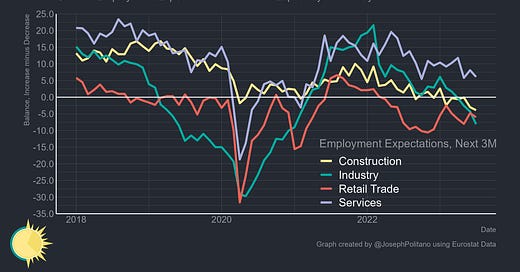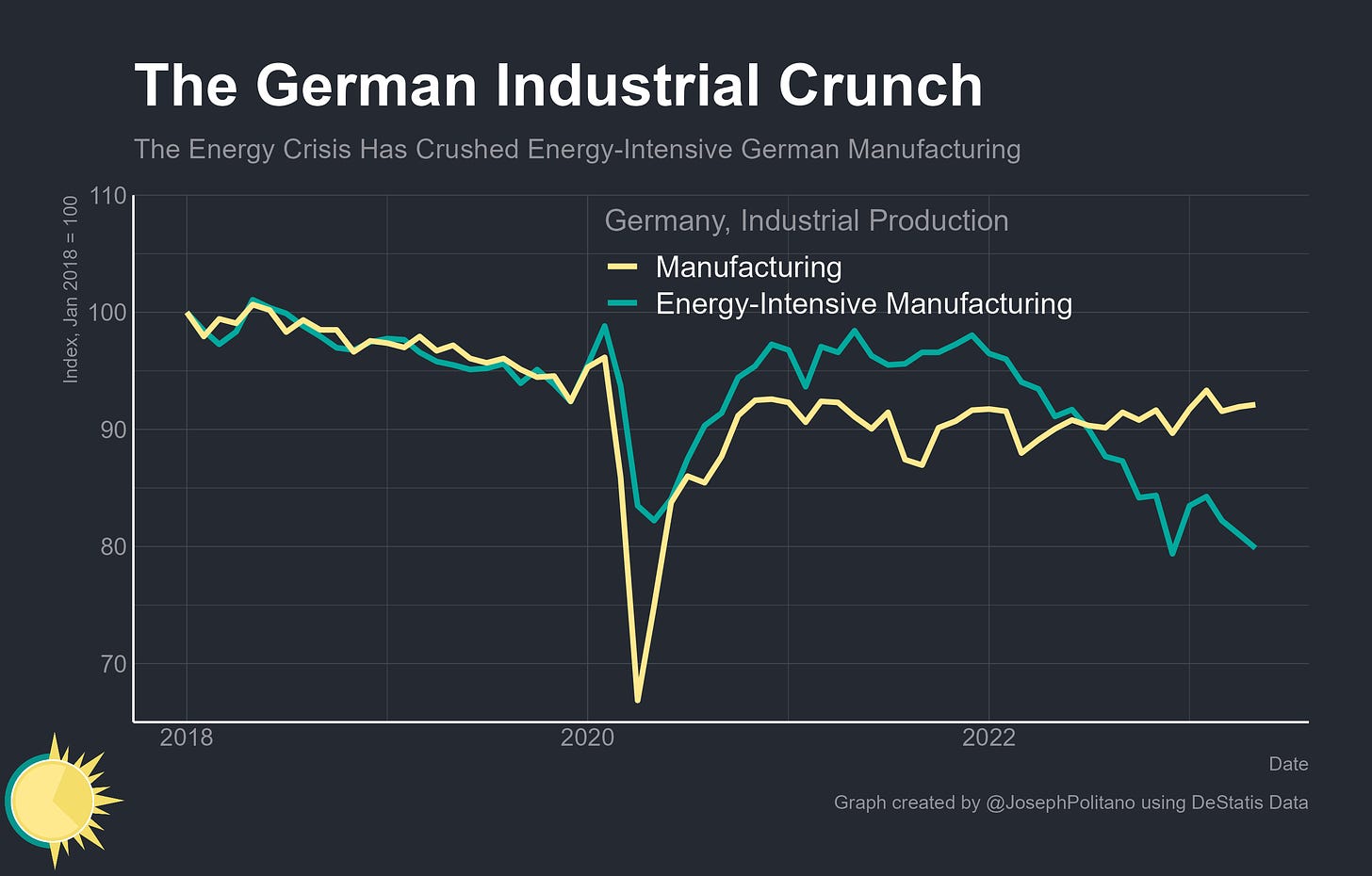Germany's Industrial Slowdown
Amidst Energy and Supply-Chain Crises, German Manufacturing Output has Been Especially Weak—and Looks to be Slowing Down Once Again
Thanks for reading! If you haven’t subscribed, please click the button below:
By subscribing you’ll join over 33,000 people who read Apricitas weekly
Germany’s economy has eked out extremely low growth over the last 5 years—recent revisions to GDP data mean its output is once again barely above pre-pandemic levels, but that still means the country has seen less than 0.5% cumulative GDP growth since late-2018. That pace is not only much slower than the US and most other overseas high-income countries, but worse than any EU member bar Czechia and worse than any major non-EU European economy bar the UK and wartorn Ukraine and Russia.
The outlook for the German economy is getting worse, with businesses across most sectors expecting to lay off workers over the next quarter. In construction, employment growth expectations are at the lowest levels since mid-2015, while they are well below pre-pandemic levels among retail and service-sector companies. Yet the expected labor market downturn is most acute in manufacturing, where net layoffs are expected to be worse than in any other sector and larger than at any period since the early pandemic.
That’s partially because, although the worst of the energy crisis caused by Russia’s invasion of Ukraine is gone, high prices and acute shortages are still pressuring many German manufacturers. Output in critical energy-intensive industrial sectors—like chemicals, metals, cement, glass, and paper—continues to decline and is now approaching some of the lowest levels in modern history. Headline manufacturing output is faring better, thanks in part to alleviating supply shortages in industries like car manufacturing that were previously highly constrained. However, as we’ll see shortly, various leading indicators for manufacturing output point to a weak upcoming Q3, and a turnaround in broader goods demand would be necessary for a more durable recovery in output.
But more broadly, German industry may be in the midst of a longer-term downturn as manufacturers’ physical investment wanes alongside their economic confidence—over the last year, German real fixed investment in the construction of new factories has fallen to lows not seen since the recessions of the early 2010s. That means smaller productive capacities to draw on in the event of a recovery, a degradation of Germany’s international competitive advantage, and possibly permanent scarring to the sector’s long-term growth. For a country where roughly a fifth of GDP and employment still comes from manufacturing, that could be a disaster in the making.
The Long Shadow of the Energy Crisis
Keep reading with a 7-day free trial
Subscribe to Apricitas Economics to keep reading this post and get 7 days of free access to the full post archives.







